Introduction
Boiled lamb meatballs, known in Chinese cuisine as “汆羊肉丸子”, are a dish that embodies comfort, warmth, and culinary precision. This traditional recipe, rooted in northern Chinese cooking traditions, combines tender, flavorful lamb with aromatic spices and fresh herbs, all simmered in a delicate broth until they reach a melt-in-your-mouth texture. Unlike fried or pan-seared meatballs, the boiling method ensures the lamb retains its natural juiciness while absorbing the subtle flavors of the cooking liquid. This dish is not only a staple in family dinners but also a highlight of banquet-style meals, where its simplicity and elegance shine. In this comprehensive guide, we will explore the history, ingredients, and techniques required to master this beloved dish, ensuring your meatballs are as authentic as they are delicious.
The Cultural Significance of Boiled Lamb Meatballs
Lamb has long been a cherished protein in Chinese cuisine, particularly in regions with colder climates, such as Inner Mongolia, Xinjiang, and northern provinces like Shandong and Hebei. The dish 汆羊肉丸子 reflects the resourcefulness of these communities, where every part of the animal is utilized, and cooking methods prioritize both flavor and nourishment. Boiling, rather than frying or roasting, was historically favored for its efficiency and ability to tenderize tougher cuts of meat. Over time, this technique evolved into an art form, with cooks refining the balance of spices, herbs, and broth to create a dish that is both humble and refined.
Today, boiled lamb meatballs are enjoyed across China and beyond, adapted to suit regional tastes and dietary preferences. Whether served in a rustic family setting or a high-end restaurant, the dish remains a testament to the enduring appeal of traditional cooking methods.
Ingredients: Building Flavor Layer by Layer
Creating exceptional boiled lamb meatballs begins with selecting the finest ingredients. Each component plays a crucial role in achieving the dish’s signature taste and texture. Below is a detailed list of ingredients, along with explanations of their roles:
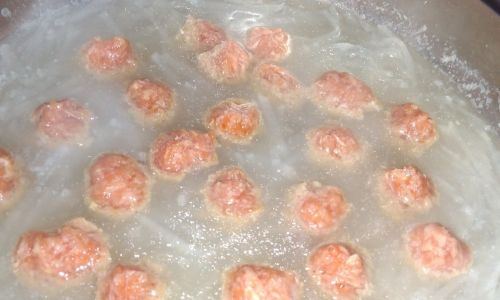
- Lamb (500 grams, preferably leg or shoulder): Opt for ground lamb with a 20% fat content. The fat ensures juiciness, while the lean meat provides structure.
- Ginger (1 tablespoon, minced): Adds a subtle warmth and helps neutralize any lambiness.
- Garlic (2 cloves, minced): Enhances the savory depth of the meat.
- Soy Sauce (1 tablespoon): Provides umami and a hint of saltiness.
- Sesame Oil (1 teaspoon): Imparts a nutty aroma and richness.
- Cornstarch (1 tablespoon): Acts as a binder, preventing the meatballs from falling apart.
- Egg White (1 large): Adds lightness and helps the meatballs hold their shape.
- White Pepper (1/2 teaspoon): Offers a mild, floral heat without overwhelming the dish.
- Chicken Broth (2 liters): The cooking liquid; opt for low-sodium to control saltiness.
- Napa Cabbage or Baby Bok Choy (200 grams): Adds freshness and texture to the broth.
- Green Onions (2 stalks, sliced): For garnish and a burst of freshness.
- Cilantro (1/4 cup, chopped): Enhances the dish’s aromatic profile.
- Salt (to taste): Adjust based on the broth’s saltiness.
- Optional: Dried Wood Ear Mushrooms (10 grams): Soaked and sliced for added texture.
Preparation: Mise en Place
Before diving into the cooking process, meticulous preparation ensures efficiency and consistency. Begin by:
- Chilling the Ingredients: Place the ground lamb, mixing bowl, and even the knife in the refrigerator for 30 minutes. Cold ingredients prevent the fat from melting during mixing, resulting in tender meatballs.
- Soaking Dried Mushrooms: If using wood ear mushrooms, soak them in warm water for 20 minutes until pliable. Drain and slice thinly.
- Prepping Vegetables: Wash and chop the Napa cabbage or bok choy into bite-sized pieces. Slice green onions and chop cilantro, keeping them separate for garnishing.
Step-by-Step Cooking Process
Marinating the Lamb
In a large mixing bowl, combine the ground lamb, minced ginger, garlic, soy sauce, sesame oil, cornstarch, egg white, and white pepper. Using your hands, gently mix the ingredients until just combined. Avoid overmixing, as this can toughen the meat. The goal is to achieve a cohesive mixture without compressing it.
Pro Tip: For an extra layer of flavor, add a teaspoon of Shaoxing wine or rice vinegar to the marinade. This step is optional but elevates the dish’s complexity.
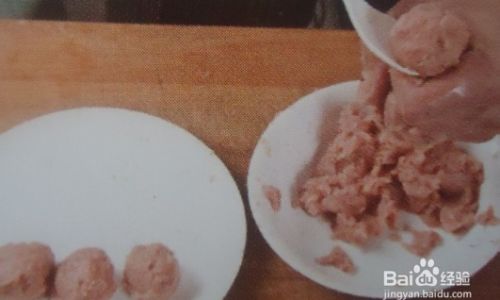
Shaping the Meatballs
Using a tablespoon or a small ice cream scoop, portion the lamb mixture into evenly sized balls, approximately 1.5 inches in diameter. Lightly wet your hands with cold water to prevent sticking, then roll each portion between your palms until smooth. Place the shaped meatballs on a parchment-lined tray and refrigerate for 15 minutes. Chilling firms up the meatballs, helping them retain their shape during cooking.
Preparing the Broth
In a large pot, bring the chicken broth to a gentle simmer over medium heat. Add the sliced wood ear mushrooms (if using) and a pinch of salt. Avoid boiling the broth vigorously, as this can cause the meatballs to disintegrate.
Poaching the Meatballs
Once the broth simmers, gently lower the chilled meatballs into the pot using a slotted spoon. Work in batches to avoid overcrowding, which lowers the broth’s temperature and leads to uneven cooking. Allow the meatballs to cook undisturbed for 2–3 minutes until they float to the surface—a sign they are partially cooked.
Adding Vegetables
After the meatballs float, add the Napa cabbage or bok choy to the broth. Stir gently to submerge the vegetables, then simmer for an additional 5 minutes. The vegetables should wilt but retain their vibrant color.
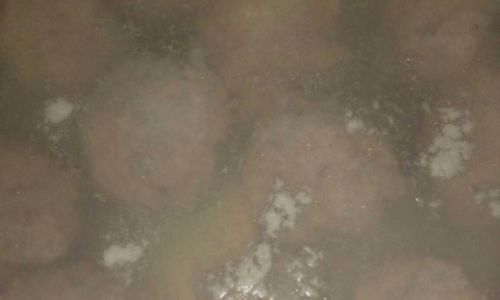
Final Seasoning and Garnish
Taste the broth and adjust the seasoning with salt if needed. Ladle the meatballs, vegetables, and broth into serving bowls. Garnish generously with sliced green onions and chopped cilantro. For an optional touch of heat, sprinkle with red pepper flakes or drizzle with chili oil.
Tips for Perfecting Your Boiled Lamb Meatballs
- Temperature Control: Maintain the broth at a gentle simmer throughout cooking. Rapid boiling can cause the meatballs to break apart.
- Texture Consistency: If the meatball mixture feels too wet, add an extra teaspoon of cornstarch. If too dry, incorporate a teaspoon of cold water.
- Fat Content: Avoid lean lamb, as it yields dry meatballs. The 20% fat ratio ensures juiciness.
- Broth Clarity: For a pristine broth, skim off any impurities that rise to the surface during simmering.
- Make-Ahead Convenience: Shape and refrigerate the meatballs up to 24 hours in advance for a quick weeknight meal.
Variations and Regional Adaptations
While the classic recipe is beloved, creative cooks often adapt it to suit local tastes or dietary needs. Here are a few variations:
- Spicy Sichuan Twist: Add doubanjiang (fermented chili bean paste) to the broth and garnish with Sichuan peppercorns for a numbing heat.
- Herb-Infused Version: Mix fresh herbs like mint or dill into the lamb mixture for a Mediterranean-inspired flavor.
- Vegetarian Adaptation: Substitute the lamb with finely chopped mushrooms and tofu, bound with chickpea flour.
- Noodle Integration: Serve the meatballs and broth over hand-pulled noodles for a heartier meal.
Serving Suggestions
Boiled lamb meatballs are incredibly versatile. Pair them with:
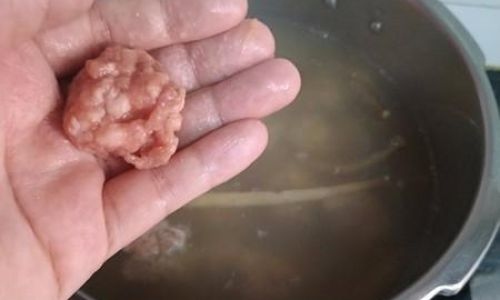
- Steamed Rice: The broth’s flavorful liquid doubles as a rice topper.
- Crispy Pancakes: Wrap meatballs and vegetables in Chinese-style pancakes for a handheld treat.
- Dipping Sauces: Offer a selection of sauces, such as black vinegar with ginger, hoisin, or a spicy chili crisp.
- Light Side Dishes: Balance the richness with pickled vegetables or cucumber salad.
Health Benefits of Boiled Lamb Meatballs
Lamb is a nutrient-dense protein, rich in iron, zinc, and B vitamins. When boiled, the cooking method reduces added fats compared to frying, making it a healthier option. The dish’s vegetables contribute fiber and vitamins, while the broth provides hydration and electrolytes. For those monitoring sodium intake, opt for low-sodium broth and adjust seasoning accordingly.
Troubleshooting Common Issues
- Meatballs Falling Apart: Ensure the broth is simmering, not boiling. Chilling the meatballs before cooking also helps them hold together.
- Tough Texture: Overmixing the lamb or using lean meat can result in toughness. Stick to the 20% fat ratio and mix gently.
- Bland Flavor: Amplify the marinade with additional spices like cumin or coriander. Taste and adjust the broth before serving.
Preserving Leftovers
Leftover meatballs and broth can be stored in an airtight container in the refrigerator for up to three days. Reheat gently over low heat to prevent the meatballs from becoming rubbery. Freeze the broth separately for up to one month, thawing it before reheating.
Conclusion
Mastering the art of boiled lamb meatballs is a journey that rewards patience and attention to detail. From selecting the finest lamb to perfecting the simmering broth, each step contributes to a dish that is both comforting and elegant. Whether enjoyed as a humble family meal or the centerpiece of a festive gathering, 汆羊肉丸子 embodies the heart of Chinese home cooking—nourishing, flavorful, and deeply satisfying. With practice, you’ll find yourself adapting the recipe to suit your tastes, proving that tradition and innovation can coexist beautifully in the kitchen. So gather your ingredients, embrace the process, and savor the joy of creating a dish that has warmed hearts for generations.
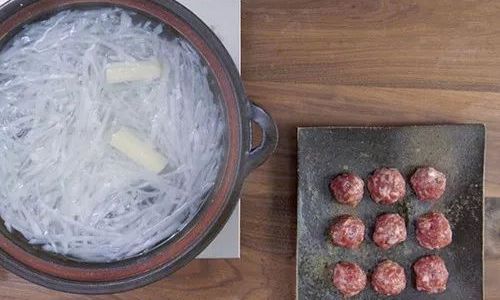
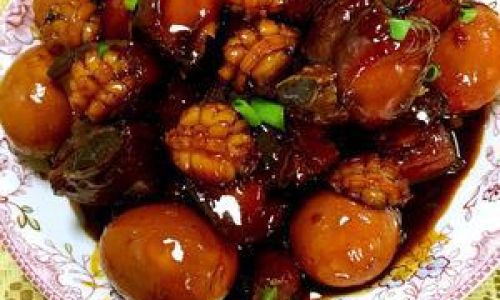
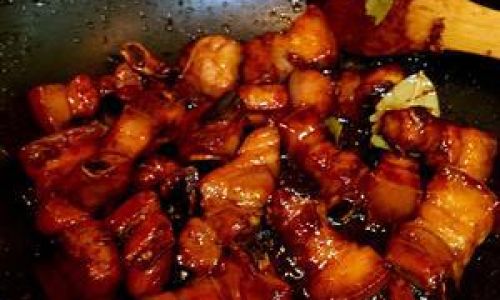
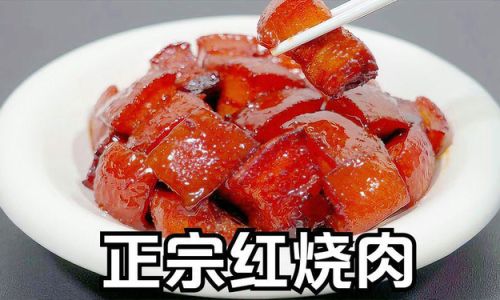
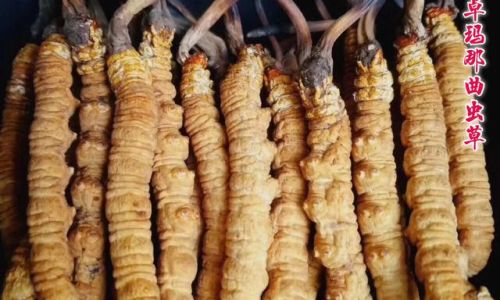

0 comments